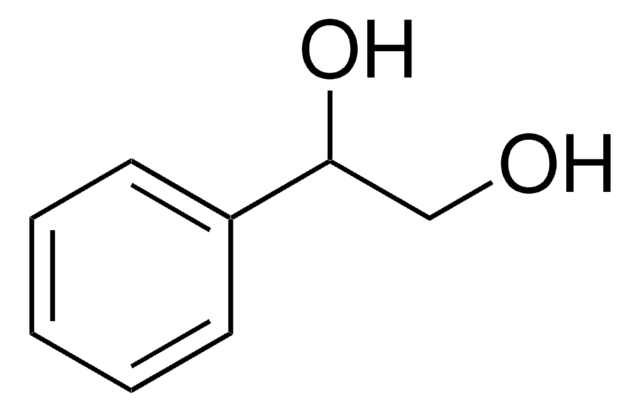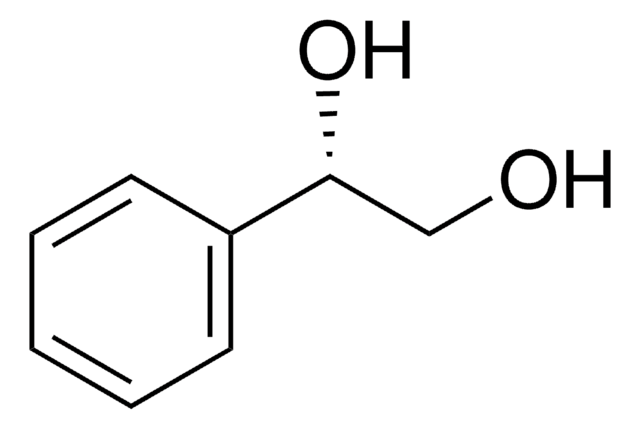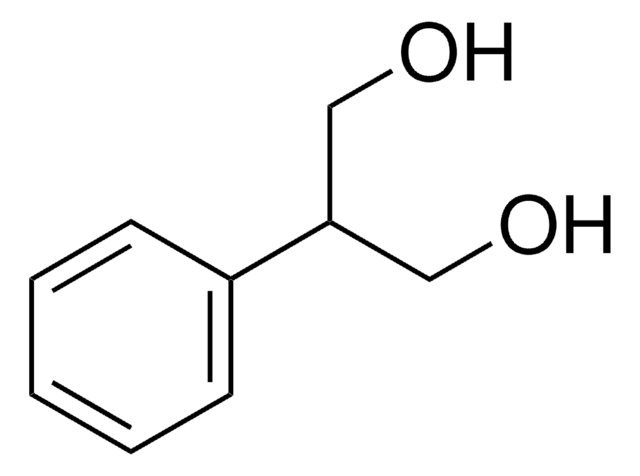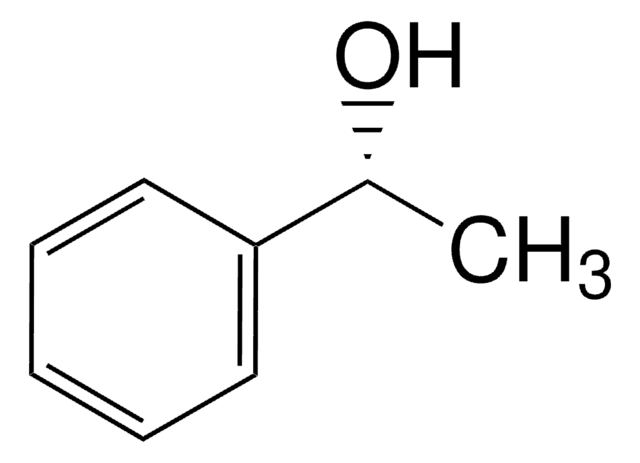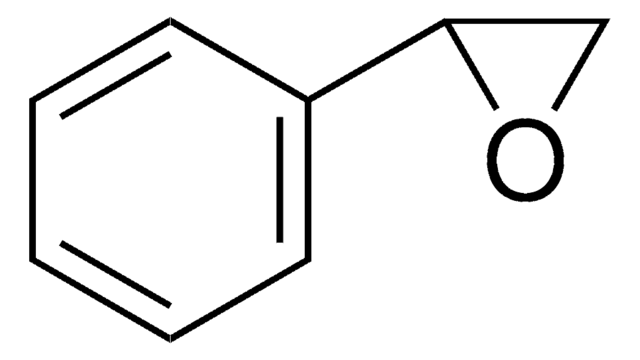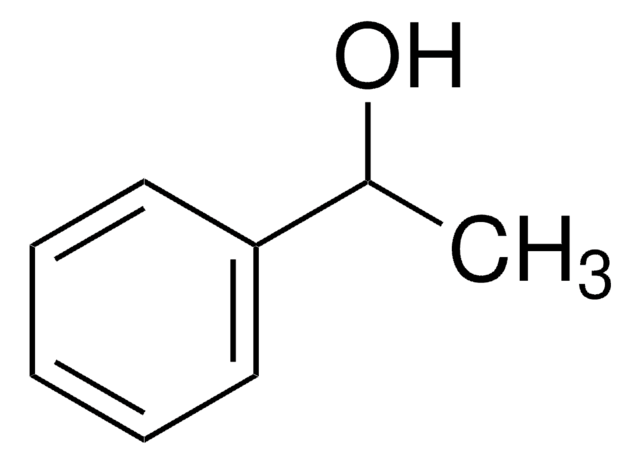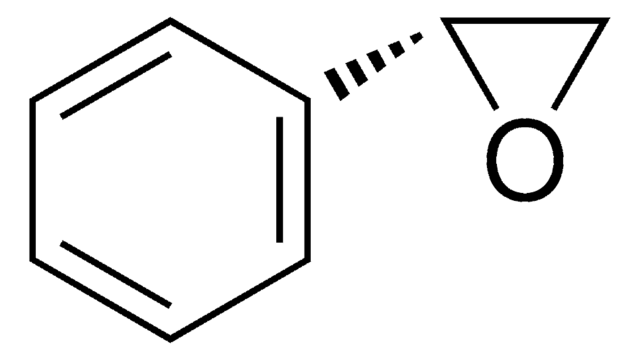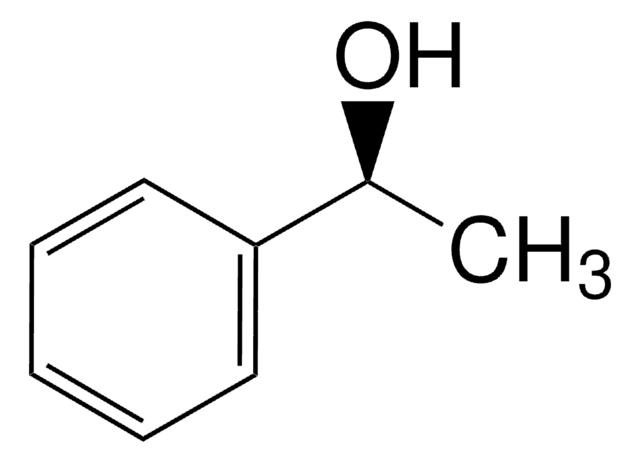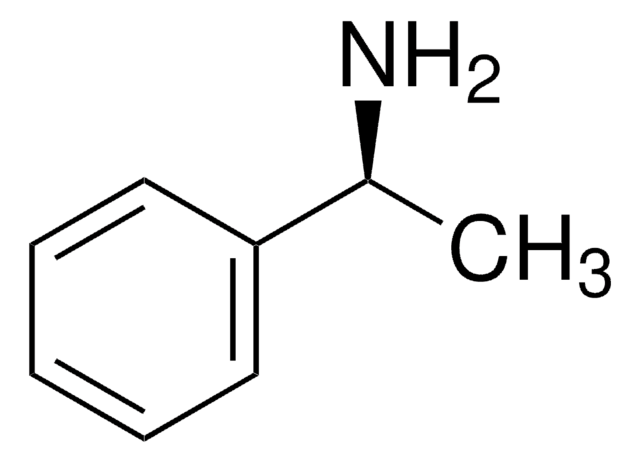302163
(R)-(−)-1-Phenyl-1,2-ethanediol
99%
Synonym(s):
(−)-Styrene glycol, (R)-(−)-Phenylethylene glycol
Sign Into View Organizational & Contract Pricing
All Photos(2)
About This Item
Linear Formula:
HOCH2CH(C6H5)OH
CAS Number:
Molecular Weight:
138.16
Beilstein:
2355547
MDL number:
UNSPSC Code:
12352002
PubChem Substance ID:
NACRES:
NA.22
Recommended Products
Assay
99%
optical activity
[α]20/D −69°, c = 1 in chloroform
bp
272-274 °C (lit.)
mp
64-67 °C (lit.)
functional group
hydroxyl
phenyl
SMILES string
OC[C@H](O)c1ccccc1
InChI
1S/C8H10O2/c9-6-8(10)7-4-2-1-3-5-7/h1-5,8-10H,6H2/t8-/m0/s1
InChI key
PWMWNFMRSKOCEY-QMMMGPOBSA-N
Looking for similar products? Visit Product Comparison Guide
Application
Intermediate for the synthesis of chiral phosphine catalysts for asymmetric hydrogenations.
Storage Class Code
11 - Combustible Solids
WGK
WGK 3
Flash Point(F)
Not applicable
Flash Point(C)
Not applicable
Personal Protective Equipment
dust mask type N95 (US), Eyeshields, Gloves
Choose from one of the most recent versions:
Already Own This Product?
Find documentation for the products that you have recently purchased in the Document Library.
J. Chem. Soc. Perkin Trans. II, 489-489 (1982)
The Journal of Organic Chemistry, 44, 1729-1729 (1979)
Jin-Zhao Wang et al.
Biomedical chromatography : BMC, 21(5), 497-501 (2007-03-16)
A simple HPLC method for the simultaneous determination of phenylglyoxylic acid (PGA), mandelic acid (MA), styrene glycol (SG) and hippuric acid (HA) in cell culture medium was developed. Analysis was performed on a C(18) column with a mobile phase composed
Rongzhen Zhang et al.
Wei sheng wu xue bao = Acta microbiologica Sinica, 49(2), 204-209 (2009-05-19)
To prepare (S)-1-phenyl-1,2-ethanediol by a one-step method, we constructed an enzyme coupled system consisting of (R)- and (S)-specific carbonyl reductases in Escherichia coli. The genes coding (R)- and (S)-specific carbonyl reductases from Candida parapsilosis were inserted into a co-expression vector
Qingsen Hu et al.
Bioresource technology, 101(21), 8461-8463 (2010-06-25)
In this study, a highly efficient process for Candida parapsilosis-catalyzed deracemization of racemic 1-phenyl-1,2-ethanediol (PED) was described, based on a resin-based in situ substrate feeding and product removal (ISSFPR) methodology. The resin H103 was selected and used to keep the
Our team of scientists has experience in all areas of research including Life Science, Material Science, Chemical Synthesis, Chromatography, Analytical and many others.
Contact Technical Service